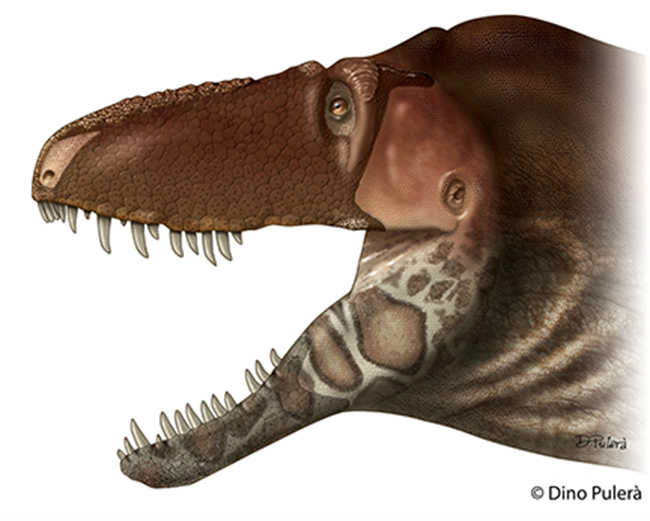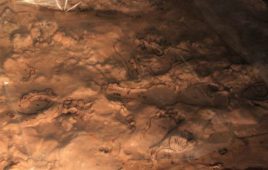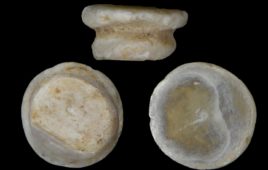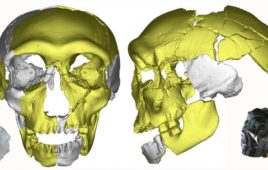
A research team has pieced together more information on the evolution of dinosaurs.
An international team of scientists have discovered a new species of tyrannosaur, providing insight in the evolution of the prehistoric creature.
The team found that Daspletosaurus horneri or “Horner’s Frightful Lizard” evolved directly from its geologically older relative—D. torosus—a rare form of evolution called anagenesis where one species gradually morphs into a new one.
This is the result of rapid evolution in the ancestral form without speciation taking place. The discovery of Daspletosaurus horneri, along with other anagenesis lineage dinosaurs from the same time and place, suggests that anagensis could have been a widespread mechanism generating species diversity amongst dinosaurs.
The research also uncovered new findings regarding the face of tyrannosaurs, which the team concluded was covered by a lipless mask of large, flat scales with smaller patches of armor-like skin and horn, as well as a highly touch-sensitive snout.
The team worked with well-preserved fossils of a skull and skeleton of a subadult, a skull and skeleton of an adult, a partial lower jaw of a subadult and isolated bones of subadults and juveniles. They compared the tyrannosaur skulls with those of crocodylians, birds and mammals, as well as earlier research that matched bone texture with different types of skin covering.
“Much of our research went beyond field paleontology – it was generated from lab-based comparative anatomy, the dissection of birds as living dinosaurs and crocodilians as their closest living relatives, and based on the similarities of the facial nerves and arteries we found in those same groups which left a trace on the bone, we were able to then reconstruct in the new tyrannosaur species,” LSU Health New Orleans Anatomist Jayc Sedlmayr, Ph.D., said in a statement.
Thomas Carr, Ph.D., of Carthage College’s Department of Biology, explained the similarities between the tyrannosaurs and crocodylians.
“It turns out that tyrannosaurs are identical to crocodylians in that the bones of their snouts and jaws are rough, except for a narrow band of smooth bone along the tooth row,” Carr said in a statement. “In crocodylians, the rough texture occurs deep to large flat scales; given the identical texture, tyrannosaurs had the same covering.
“We did not find any evidence for lips in tyrannosaurs, the rough texture covered by scales extends nearly to the tooth row, providing no space for lips.”
Daspletosaurus horneri lived in Montana around 75 million years ago and had a body length of approximately nine meters, a wide snout, small orbital horns and a slit-like pneumatic opening on the inside of the lacrimal bone.
The large horn behind the eye is elevated beyond the side of the head, indicating a covering of keratin—the hard and shiny material that makes up human fingernails. It preyed on horned dinosaurs, crested duckbill dinosaurs, dome-headed dinosaurs and smaller theropod dinosaurs.
“In some ways, the facial components of the trigeminal nerve of these dinosaurs mirrors that of humans,” Sedlmayr said. “The human trigeminal nerve provides significant touch sensitivity to the face.
It brings back sensation from our facial muscles allowing us to fine tune and coordinate the emotional and social displays so important to human communication,” he added. “This nerve is so sensitive that in pathological conditions, trigeminal neuraligia, it can be responsible for some of the most severe pain our species can endure; in extreme cases, the pain is so great that many people suffering from it end up committing suicide.”
Sedlmayr’s research was based on dissecting birds, alligators, crocodiles, lizards and turtles, including injecting their blood vessels and doing angiographic studies from some of their specimens.
Sedlmayr then hypothesized the homology based on the dissections. If they had boney traces, Sedlmayr looked for those in fossil specimens and if a specific nerve or artery went through a particular opening or groove in a bone in both birds and crocodiles and the same groove was found in dinosaurs he could then reconstruct that nerve or artery in the extinct animal.
“Our findings of a complex sensory web is especially interesting because it is derived from the trigeminal nerve which has an extraordinary evolutionary history of developing into wildly different ‘sixth senses’ in different vertebrates – sensing magnetic fields for bird migration, electroreception for predation in the platypus bill or the former whisker pits of dolphins, sensing infrared in pit vipers to identify prey, guiding mammals movements through the use of whiskers, sensing vibrations through the water by alligators and turning the elephant trunk into a sensitive hand similar to what has been done to the entire face of tyrannosaurs.”




